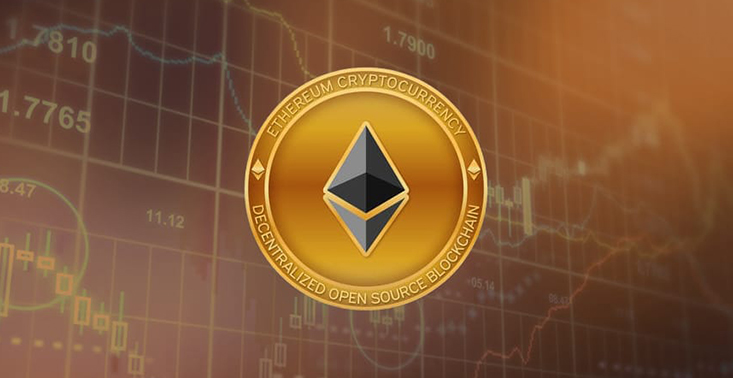If you’re wondering what MATIC tokens are and whether the Matic Network and Polygon are the same thing or not, don’t worry. You’re not alone.
Polygon is a secondary scaling solution for the Ethereum blockchain. These types of solutions work on top of an existing blockchain network rather than using their own blockchain. In this instance, Polygon works on top of Ethereum which has become slow and expensive to use as it becomes ever more popular.
As of December 2021, the Ethereum blockchain can process about 14 transactions per second with each transaction costing on average around $25. However, these fees can spike during times of high network congestion, making life difficult and unpredictable for all but the richest of users. In May, the average Ethereum fee skyrocketed to $71.
This is a big problem for anyone wanting to use Ethereum-based decentralized finance (DeFi) protocols and non-fungible token (NFT) marketplaces or transfer tokens over the network, as the fees can quickly mount up and cost hundreds of dollars.
Scaling solutions like Polygon make things cheaper by processing some of those transactions elsewhere. In Polygon’s case, batches of transactions are processed on Polygon’s proprietary proof-of-stake blockchain.
This cuts costs since you only have to pay for a fraction of a single Ethereum transaction (plus Polygon’s own network fees), and saves time. Polygon claims to be able to process up to 65,000 transactions each second with fees costing less than a fraction of a cent.
What’s MATIC?
Over 2021, you may have seen the blockchain project Polygon used in conjunction with Matic Network. This is because Matic Network was the original name of Polygon before the project was rebranded in February 2021. Matic Network initially launched in 2019.
The main source of confusion comes from the fact Polygon decided to retain the ticker MATIC for its native utility token after the rebranding. This means the two words are interchangeable. Polygon is to Matic as Ethereum is to ETH.
There are 10 billion total possible MATIC coins, and as of December 2021, 7.16 billion of them are in circulation. The rest will be minted by stakers – users who deposit their MATIC tokens into a staking smart contract in order to become validators. Polygon is a proof-of-stake network that randomly selects stakers to validate new transaction data.
The surging popularity of Ethereum in 2021, sparked by the bull run for NFTs, play-to-earn games and decentralized finance protocols, sent the prices of scaling solutions like Polygon/MATIC skyrocketing. MATIC rose from $0.018 and a market capitalization of $81 million at the start of 2021 to a market cap of $20 billion and an all-time high price of $2.92 on Dec. 27. This was also supplemented by news that the leading decentralized exchange platform Uniswap was preparing to deploy on Polygon.
Scaling solutions: the bigger picture
Polygon is a layer 2 solution, which means it is a piece of software that sits atop blockchains (known as layer 1s). Other examples of layer 2 solutions include the Bitcoin Lightning Network, which cuts the costs of Bitcoin transactions, and Loopring.
Polygon plans to expand beyond Ethereum. It pitches its services as a framework for an “Internet of blockchains,” which means it can connect any Ethereum-interoperable blockchain together and be used to cut transaction costs and increase speeds.
However, Polygon is not the only project that attempts to hasten transactions on Ethereum. There are a number of rival blockchains that also support “bridges” and let people trade variants of Ethereum tokens. These include:
1. Avalanche
2. Solana
3. Cosmos
According to a dashboard on Dune Analytics, Polygon’s bridges, which hold $6.6 billion in total value locked (TVL), are second to Avalanche, which holds $7.78 billion. Arbitrum, another popular layer 2 solution, holds $2.5 billion, and Ronin Bridge, a bridge for the Axie Infinity ecosystem, has $6.1 billion in TVL.
The future of scaling solutions like MATIC is uncertain. At press time, Ethereum is the largest smart contract network in the world; its native currency, ETH, has a market cap of $438 billion. Its rivals are picking up speed but still lag at some distance: Solana, for instance, has a market cap of just $53 billion.
Ethereum will speed up and become cheaper after the launch of Ethereum 2.0. It’s expected to launch in full within the next few years, although the project has been beset by numerous delays over the years. That said, when ETH 2.0 comes, it may make scaling solutions redundant – or at least less important.
Vitalik Buterin, Ethereum’s co-founder, has said that the technologies may co-exist. It’s difficult to place too much emphasis on Ethereum 2.0 when considering MATIC’s future, given that the protocol plans to expand to other blockchains, and that interoperability solutions like Cosmos may make the industry less reliant on protocols like Ethereum, naturally spreading the load of computational work across other blockchains.






